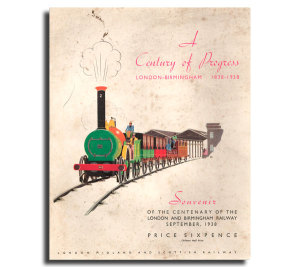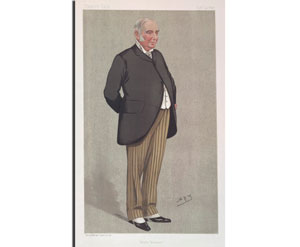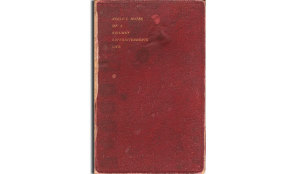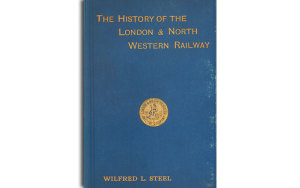Description
The title of this book is a bit misleading. It would appear that Stevenson did intend to write a memoir covering his railway service, from his appointment in June 1837, as “the first clerk to the first manager” of the London and Birmingham Railway, then still under construction. He made steady progress in the Goods department, but often seems to have been disappointed in a promotion he expected to obtain, finally in 1874 when George Findlay became Assistant General Traffic Manager, he was passed over for the vacant post of Chief Goods Manager in favour of Thomas Kay. Stevenson does not conceal his bitterness. “It was no reflection on me to be displaced by such a man as… Mr. Findlay, but as compared to Mr. Kay, I was the older servant and slightly the senior manager. I had greater experience… I may add without egotism that I was better educated”. Stevenson assumed that his career had peaked, but then in1877 the LNWR decided to end the long standing arrangements where cartage and warehousing were carried out by the agents Chaplin and Horne, and bring the work “in house”. The task was handed to Stevenson.
His work kept him so busy now, and at various other periods that he had little time for keeping a journal and the editor has attempted to fill some of the gaps by quoting from letters which he wrote to his friend the Rev. Turnbull. Unfortunately, these have less railway and more social content, but two things emerge throughout, the surprising number of thefts and frauds committed by employees, and the appalling toll of fatalities and mutilations in railway yards. It is no longer a surprise that Crewe and Swindon had special workshops devoted to the making of artificial limbs.
With the title of London District Goods Manager Stevenson moved into offices at “The Swan With Two Necks” in Gracechurch Street. It was a curious feature of the LNWR system of local receiving, canvassing and delivery offices that for many years, even into LMS days, these were located in former coaching inns, or new buildings with the same name on the site. (see http://www.com/product/old-london-coaching-inns-and-their-successors-ebook/ ). Eventually, Stevenson´s department moved into purpose built offices at Broad Street, where Carl Grasemann became his assistant and eventual successor on Stevenson´s retirement in 1890. (Karl Grasemann was the father or grandfather of Cuthbert Grasemann, John Elliot’s successor as Public Relations Officer of the Southern Railway. The junior Grasemann was a keen collector of railway memorabilia, and in the face of opposition from O.V.S.Bullied, encouraged one of his junior clerks, a certain Ian Allan, to publish “ABC of Locomotives of the Southern Railway”. The rest, as they say is history. An interesting example of the interconnectedness of things…
“In the year 1890 a terrible domestic calamity befell Mr. Stevenson, and the Directors, in recognition of his long and faithful services, placed him upon the retired list with ample provision for his declining years”. It is not the least irritating feature of this book that the “calamity” is not explained and a certain vagueness about dates is here perpetuated, as “The Railway Year Book” gives 1891 as his retirement date. As to the selection of poems by Mr.Stevenson which bring up the rear of the volume, well the less said the better.
PREVIEW BELOW – MAY TAKE A WHILE TO LOAD.





Reviews
There are no reviews yet.